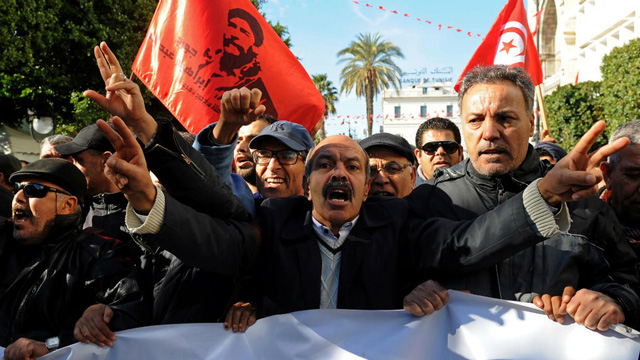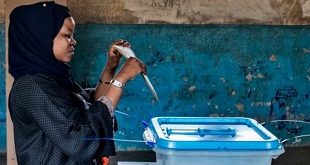
Tunis, Tunisia | AFP | Ahead of Sunday’s presidential runoff vote, here is a recap of key developments in Tunisia since its 2011 revolution.
– President flees –
Demonstrations erupt in central Tunisia in December 2010 after the self-immolation of a fruit seller protesting police harassment and unemployment.
After weeks of unrest in which 338 people are killed, dictator Zine El Abidine Ben Ali flees in January 2011, ending 23 years in power.
He is the first leader to be toppled by the Arab Spring, which spreads through the region like wildfire.
– Victory for Islamists –
In October 2011, Tunisia’s first free election sees Islamist group Ennahda win 89 of 217 seats in a new constituent assembly.
The assembly elects former opposition leader Moncef Marzouki as president in December. Hamadi Jebali, Ennahda’s number two, is charged with forming a government.
– Attacks, unrest –
In April 2012, police clash with thousands of jobless protesters in the southwestern mining belt.
More violent demonstrations follow in June and August, and jihadists stage attacks.
In September, hundreds of demonstrators attack the US embassy, in protest at an online US-made film that mocked Islam.
A series of strikes and demonstrations affect industry, public services, transport and business, with unrest mostly in the economically marginalised interior.
– Opposition leaders killed –
In February 2013, prominent leftist opposition leader Chokri Belaid is assassinated in Tunis.
In July, fellow leftist Mohamed Brahmi is also shot dead.
Islamic State (IS) group jihadists claim both killings.
– Democratic transition –
In January 2014, a new constitution is adopted, a year later than planned. A government of technocrats is formed and Islamists withdraw from power.
In October, the secular Nidaa Tounes party led by Beji Caid Essebsi comes top in parliamentary polls and forms a coalition with Ennahda.
Two months later, Essebsi wins Tunisia’s first free presidential election.
– String of attacks –
In 2015, Tunisia suffers three attacks claimed by IS militants.
The attacks leave 72 dead, mostly foreign tourists and security personnel, including at the Bardo museum in Tunis and a coastal resort.
In 2016, jihadists attack security installations in a town on the Libyan border, killing 13 members of the security services and seven civilians.
– Fresh protests –
In January 2016, a new wave of protests erupts after the death of a young unemployed man in a demonstration.
In May, the International Monetary Fund green lights a new four-year loan of $2.9 billion.
In January 2018, protests erupt after an austerity budget takes effect.
– Political instability –
Essebsi in September announces the end of his party’s alliance with Ennahda, which had been part of a unity government since 2016.
In July 2019, the ailing Essebsi dies aged 92, months before the end of his term.
In August a newcomer to the political arena who is running for president in elections set for the following month, Nabil Karoui, is arrested on charges of money laundering.
He nonetheless comes second in the first round of the vote in September, with nearly 16 percent behind independent law professor Kais Saied who has 18 percent.
In legislative elections on October 6, Ennahda takes the most seats — 52 out of 217 — but far short of the 109 needed to govern.
In a further twist, Karoui is released from jail on October 9, days ahead of the presidential runoff vote.
 The Independent Uganda: You get the Truth we Pay the Price
The Independent Uganda: You get the Truth we Pay the Price


